Electrical Generation And Grids and Must VASTLY Expand To Accommodate Transportation Loads
It Would be the equivalent of the Manhattan Project --guessing $5 Trillion?? Double That If The US Government is Involved. And For What? China and India Won't Go Green.
There is no ‘single’ electric grid in America (and N. America). There are regional electrical grids with some interconnections. See the figure below:
For reference, the following Figure 1 shows the US Energy Consumption by Source and Sector for 2021 (from the EIA). I’ve done the math to analyze the amount of extra power that is needed to convert homes, small businesses, personal automobiles and light trucks to electric. Also, I want to comment on the amount of conventional power generation and grid capacity to handle the substantially greater loads. Figure 1 units are in quadrillion British Thermal Units (BTUs), so I continue to use those units but ultimately convert the results to Megawatts.
Converting Residential and Light Commercial to All Electric
The figure shows the Residential and Light Commerical segments alone use a total of 20.7 quadrillion BTUs (Quads) of energy in total, consisting of 10.6 Quads of electricity including renewable power. (I did the hard work of the math and conversions).
Let’s assume that you really, really hate hydrocarbons so you’re goal is to ALSO get rid of 10 Quads of nat.gas/petroleum being used in the residential/light commercial sectors. One Quad already comes from renewables, so you only need to add 19.6 Quads of power to the electrical grids. All because you don’t like natural gas heating and cooking? Anyway…
Converting Autos and Light Trucks to Electric
You can also see that the transportation sector uses 26.9 Quads of energy in total but sources at the EIA show me that only 54.2% of that total is for cars and light trucks. The balance is air transport, ocean-going shipping, large commerical freight, etc. So, 14.6 Quads (54.2% of 26.9) could be more targeted for transition to electrical energy and away from petroleum. The other 12.3 Quads (45.8%) remains petroleum, primarily diesel for heavy transport and kerosene for air travel.
In summary one would need 14.6 + 19.7 or 34.3 Quads to attain the goal of converting all houses and most light transportation to electric. That’s a big number because the current average electrical generation is 12.9. At first blush, we’d need almost 3 times our current capacity.
The Grids and Power Generation Are Already Limited In Peak Periods
Note that the current average generation of retail power is 12.9 Quads(Fig 2), but it ranges from near 20 Quads to a low of 10 Quads (From Figure 3). (I’m doing all the hard math for you)

Grid Capacity: Nearly every electric grid system also reaches it’s capacity from time to time due to extremely cold or extremely hot weather where electrical loads soar. In the USA, our total grid reaches it’s MAXIMUM load in July every afternoon due to air conditioning. The peak is about 650 million kilowatthours or a heat rate or 19.5 Quad rates in July in the PM, but about 12.8 Quads in early mornings in July. So the grid is highly stressed generally at the equivalent heat rate of 19.5 Quads. That we know this by experience —as instances of blackouts or rolling brownouts or blackouts in extreme heat are well known.
Let’s assume that 19.5 Quads is the practical capacity of the grid system (note, that we’re making a gross assumption as there are many grid regions and there may be many local or regional grid bottlenecks. To assume a “grid” capacity is 19.5 Quads is vastly simplified assumption, but we’re just trying to get some ballpark figures)
If we were able to restrict charging of electric vehicles after 10 pm to 6 am during the night, or when electric use declines in the spring and fall, then we might need a smaller increase in the grid capacity. It’s possible to transmit electric price information on the grid itself to end users so that end user’s charging equipment could halt charging when the price of electrical energy soars. Every user could set a not-to-exceed price on his smart charging equipment (yes, we would need smart-charging equipment).
Power Generation: The EIA reports that there’s about 37 Quads of nameplate power generation is available. They report the capacity in megawatts. (To convert to Quads, divide megawatts by 33457) So, we might conclude that the grid itself limits the current power available, or we could also conclude that the nameplate generation capacity of facilities is overstated in practical terms (downtime, maintenance, failures, remedial work, old equipment etc.)
Power blackouts and brownouts could also indicate a power generation rate that is difficult to maintain reliably for peak periods and would not allow for much maintenance of power generation plants. So, even 19.5 Quads of continuous fossil fuel generation may not be practical — if we were to take advantage of peak generating rates at all times.
Remember, we’re pretending to be climate warming hardasses and insisting on having 34 Quads of power and we’re apparently limited at 19.5. But our target of 34 Quads of electrical capacity is also an average, So, let’s assume that we would need to at least double the capacity of the grids AND double the fossil fuel or nuclear generating plants (because solar is not available every night and wind power availability varies dramatically).
Renewables Should Really Be Termed “Intermittents”
Carbon-Free Renewables Are Incredibly Unreliable—Except Nuclear of Course. Thanks to Gail Tverberg at Our Finite World for most of the following charts:

Also see my post: Wind Failed the Stand-alone Texas Grid which discusses the huge power outages in Texas during freezing weather where 10's of millions of people suffered .
Guesstimate of Additional Costs for Significant Electrification
We need to add 19 Quads or 635 Megawatts of power generating capacity. That’s additional power needed to accommodate significant electrification as discussed above. And of course you want to add all of that in solar and wind capacity. But given the extremes of availability of “Intermittents” you must add nearly 100% fossil-fuel or nuclear plant backup. Remember, we don’t have a single grid, we have regional grids with some interconnections.
Assume that we add 30% Solar at $1327/kW, plus 50% wind at $1718/kW and 20% battery storage at $1318kW, that works out to be $1 Trillion.
Add the 100% fossil fuel backup: assume we add 50% peak load aeroderivative turbine generators (natural gas) at $1294/kW, 30% nuclear at $6695 and 20% Coal fired plants at $1200. The total works out to be $1.85 Trillion
Cost for a new parallel electric grid to double capacity Add $2 Tillion (Wild Ass Guess)
In total you need about $5 Trillion hypothetically. That’s about $31,000 per US worker (164 million US workforce) in debt. If the government gets involved in this, DOUBLE the costs!
Back to Reality
The reality is that solar and wind is STILL only 4.7% of our nation’s total energy. Germany’s is only 6% and they have been renewable energy religious cultisADDts for decades. Nearly all of it requires a 100% backup consisting mostly of conventional power sources: coal, nat.gas or nuclear energy.
Bottom Line
Electrification of homes and light transporation is very expensive There’s a high cost to even attempt to be “Green.” Temperatures will not drop even after all of that money spent.
Even with all these modifications, 1/2 of US transport would still be carbon-fueled. And there is still a large role for natural gas and petroleum products in the industrial setting as feedstocks with significant unavoidable carbon emissions. Since China is by far the biggest emitter of carbon (and India is up and coming too), temperatures will never drop— even if you spent the $5T. One question: Do you really want temperatures to drop?? Winter is by far the deadliest season for deaths. Do you want colder temperatures?


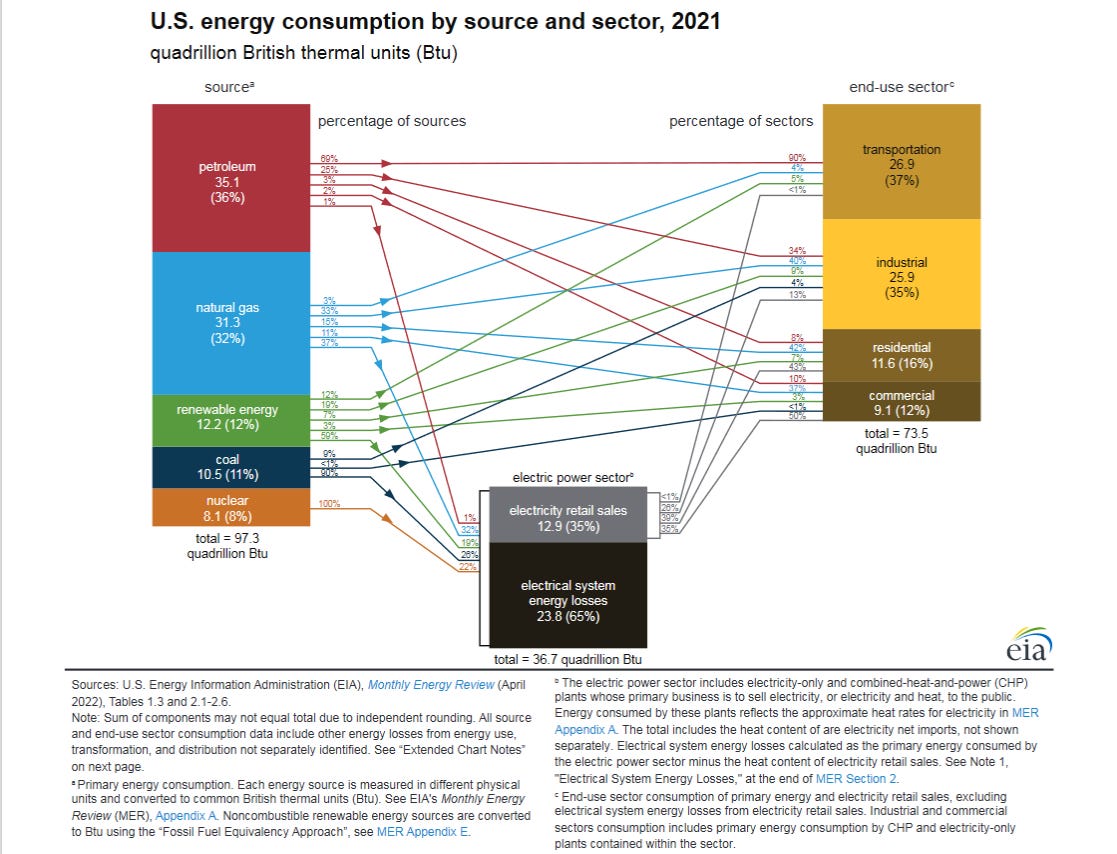
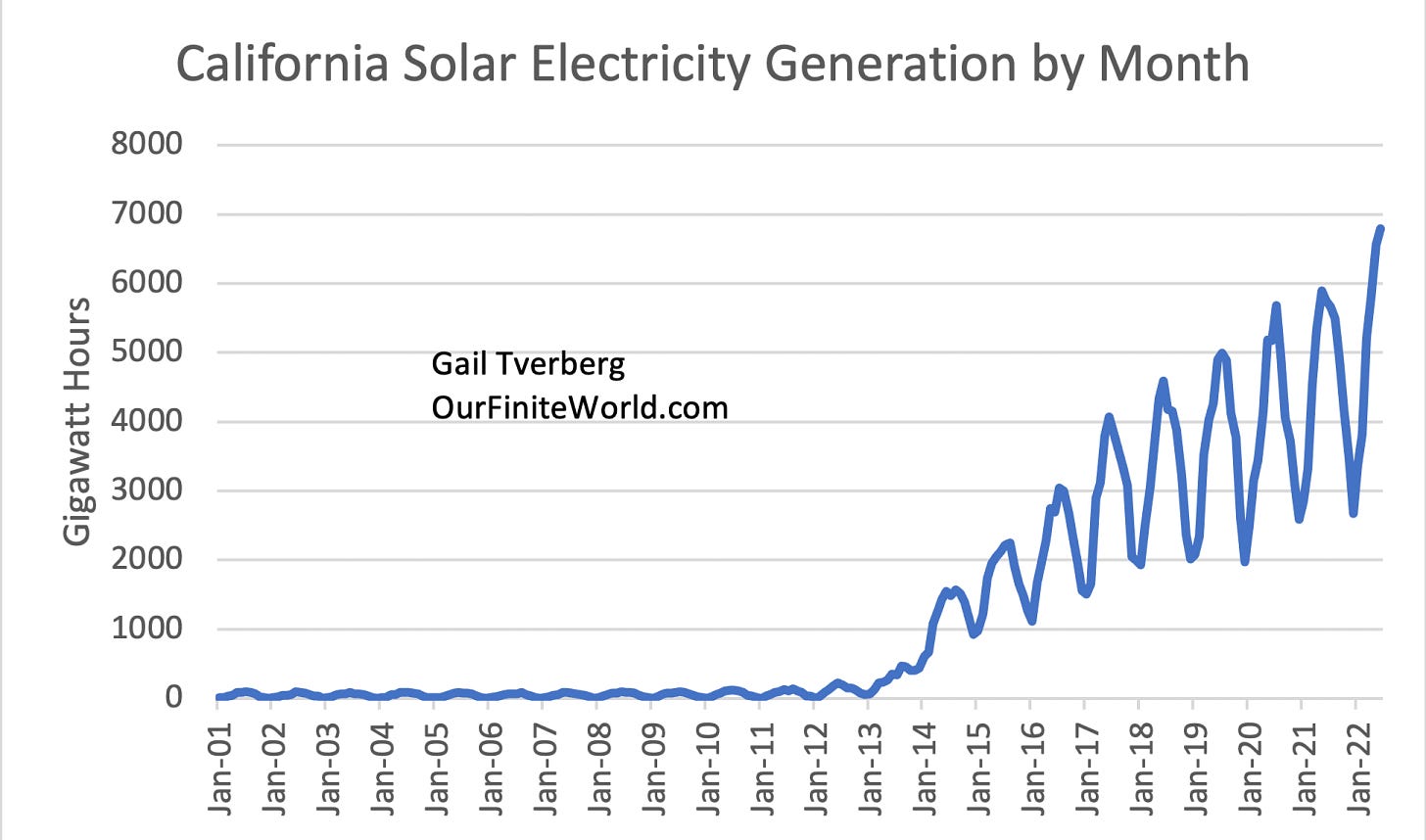
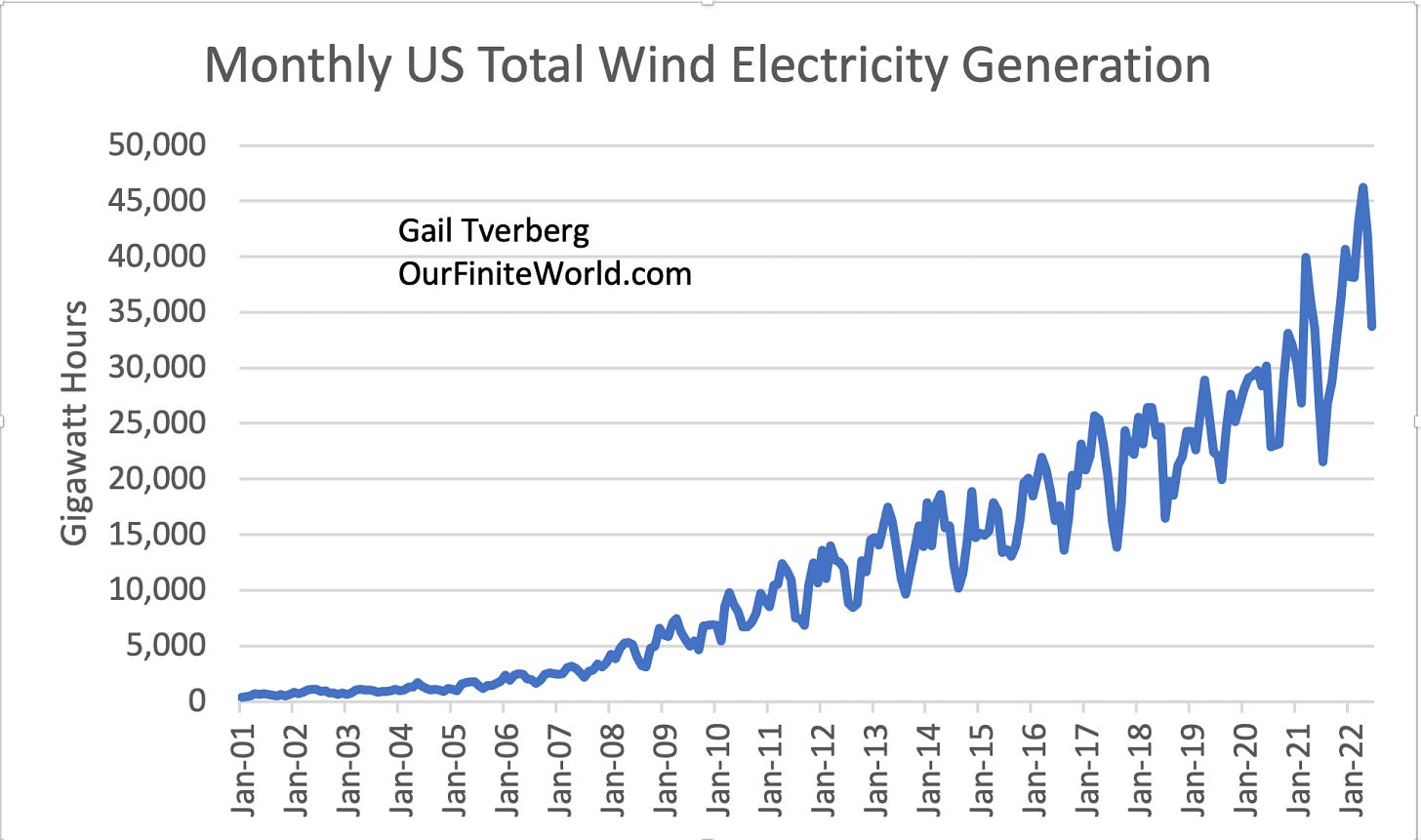
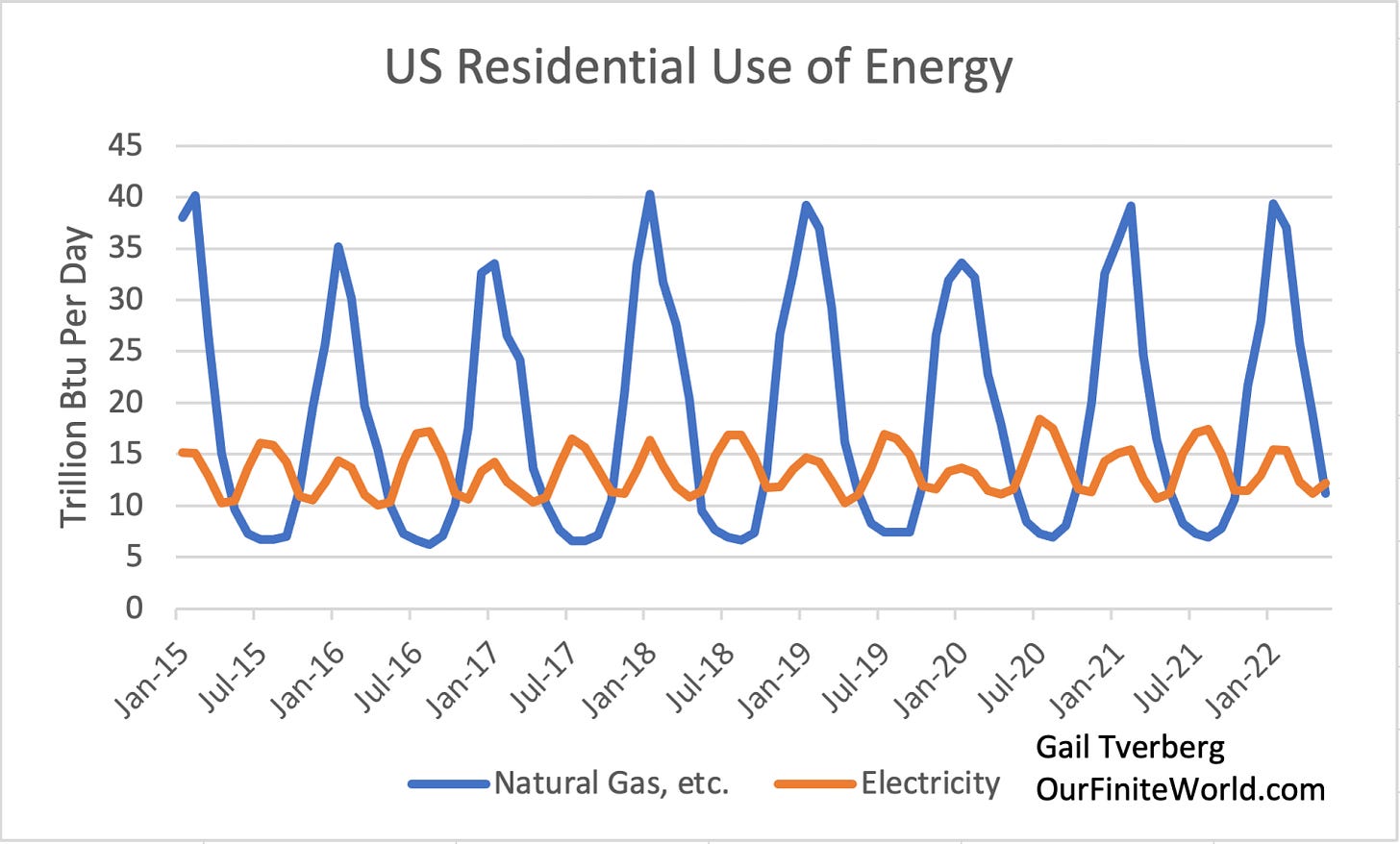


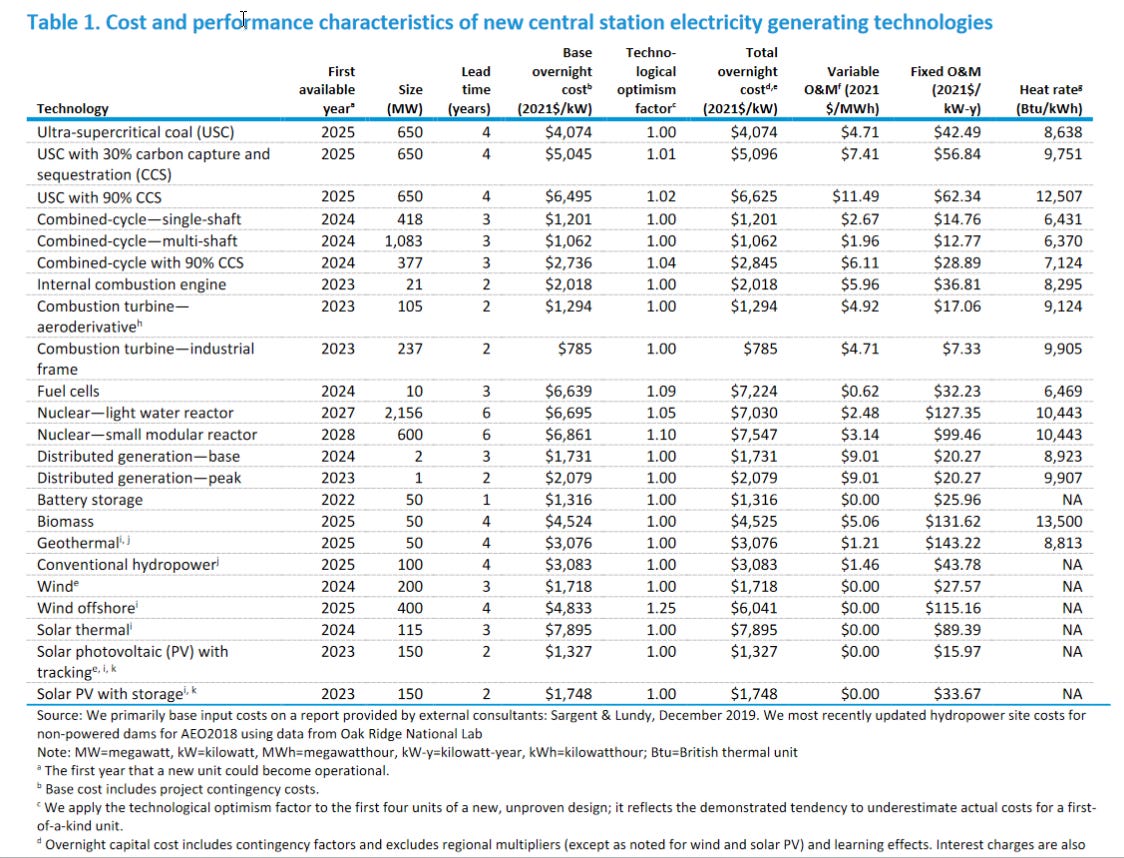
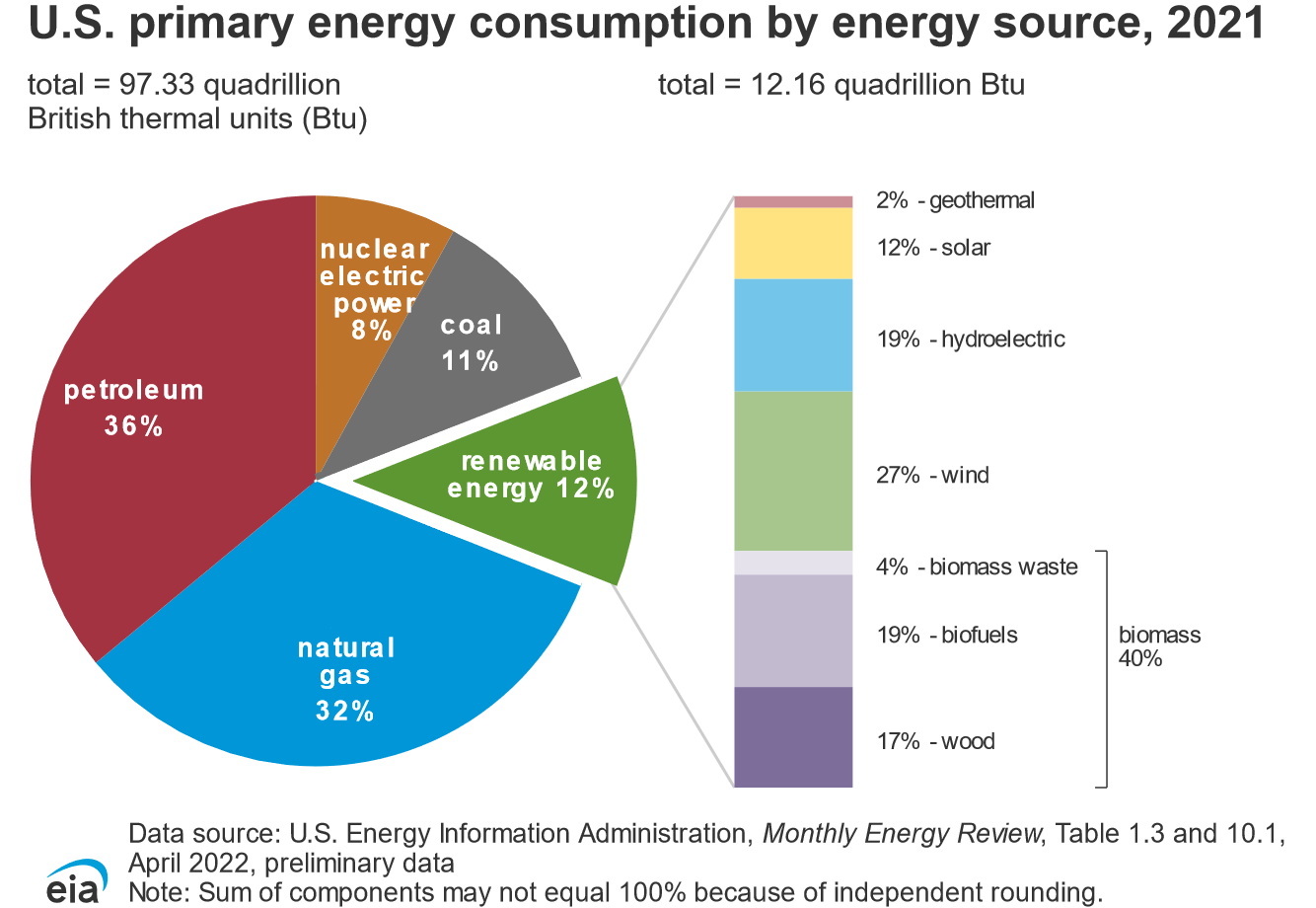

August 6. 2023, I noticed a big error of mine in the energy conversions. Most of the article deals with energy flows in "Quads" or Quadrillion of BTUs because that's the unit used in the first graphic. Later in the article, when I was trying to quantify costs to electrify transportion, I said, "We need to add 19 Quads or 635 Megawatts of power generating capacity." I think that number is 635 Million Megawatts. Big difference.
It would affect the cost of additional fossil fuel plants--possibly much higher. I'll have a look and revisit calculations. I'm not sure that they are correct. They SEEMED correct, but now I'm not sure. I'll revise this post at some point if necessary.